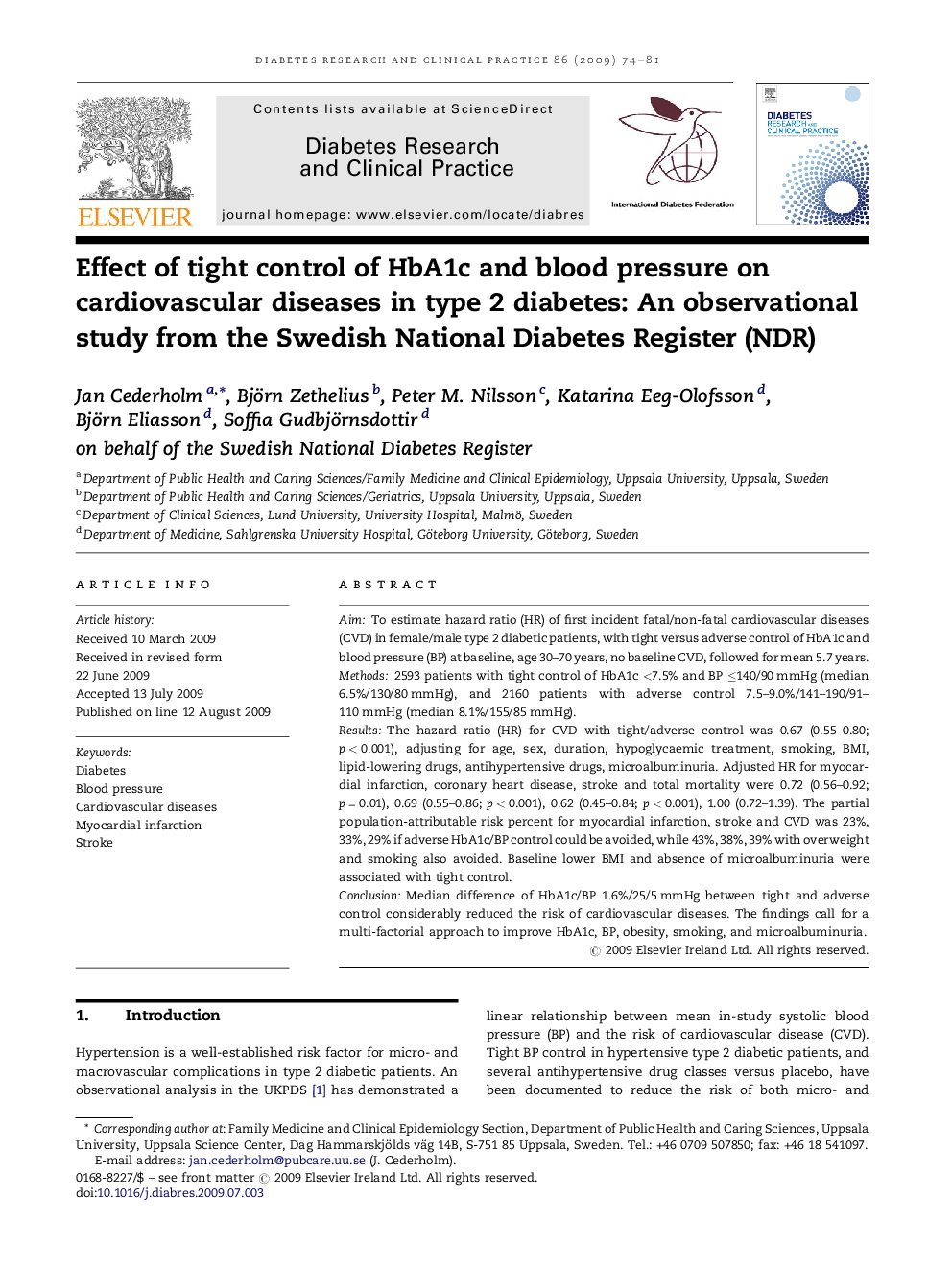| Article ID | Journal | Published Year | Pages | File Type |
|---|---|---|---|---|
| 2797804 | Diabetes Research and Clinical Practice | 2009 | 8 Pages |
AimTo estimate hazard ratio (HR) of first incident fatal/non-fatal cardiovascular diseases (CVD) in female/male type 2 diabetic patients, with tight versus adverse control of HbA1c and blood pressure (BP) at baseline, age 30–70 years, no baseline CVD, followed for mean 5.7 years.Methods2593 patients with tight control of HbA1c <7.5% and BP ≤140/90 mmHg (median 6.5%/130/80 mmHg), and 2160 patients with adverse control 7.5–9.0%/141–190/91–110 mmHg (median 8.1%/155/85 mmHg).ResultsThe hazard ratio (HR) for CVD with tight/adverse control was 0.67 (0.55–0.80; p < 0.001), adjusting for age, sex, duration, hypoglycaemic treatment, smoking, BMI, lipid-lowering drugs, antihypertensive drugs, microalbuminuria. Adjusted HR for myocardial infarction, coronary heart disease, stroke and total mortality were 0.72 (0.56–0.92; p = 0.01), 0.69 (0.55–0.86; p < 0.001), 0.62 (0.45–0.84; p < 0.001), 1.00 (0.72–1.39). The partial population-attributable risk percent for myocardial infarction, stroke and CVD was 23%, 33%, 29% if adverse HbA1c/BP control could be avoided, while 43%, 38%, 39% with overweight and smoking also avoided. Baseline lower BMI and absence of microalbuminuria were associated with tight control.ConclusionMedian difference of HbA1c/BP 1.6%/25/5 mmHg between tight and adverse control considerably reduced the risk of cardiovascular diseases. The findings call for a multi-factorial approach to improve HbA1c, BP, obesity, smoking, and microalbuminuria.
